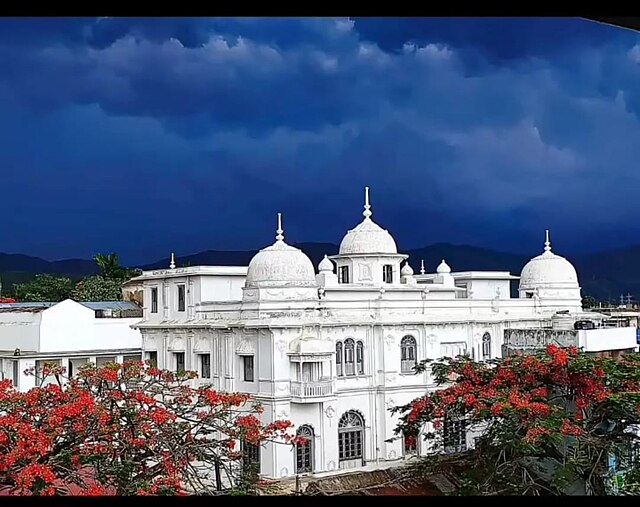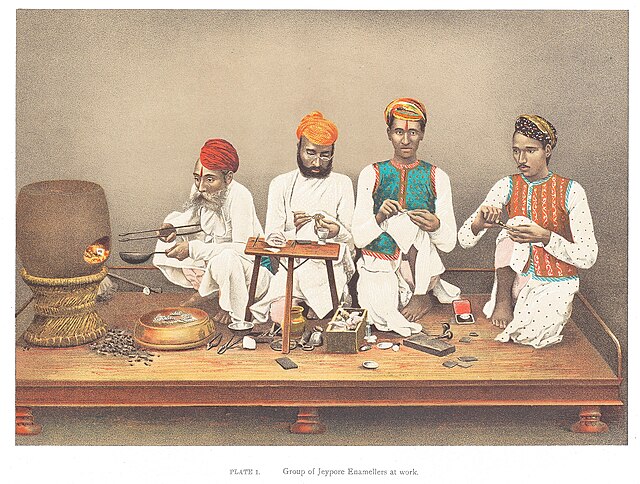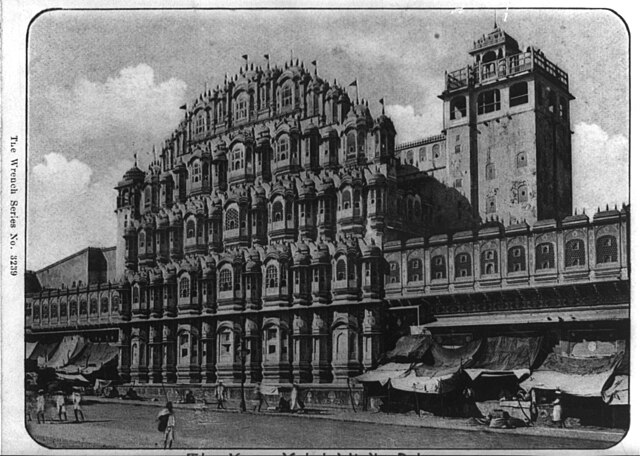Have you ever wondered what it feels like to step into a living museum where ancient traditions blend seamlessly with modern life? Welcome to Jeypore, a captivating town in Odisha that’s waiting to tell you its incredible story. This isn’t just another travel destination – it’s a journey through time, culture, and natural beauty that will leave you spellbound.
What Makes Jeypore Special?
Jeypore isn’t your typical tourist hotspot, and that’s exactly what makes it extraordinary. This charming town in the Koraput district of Odisha offers something rare in today’s world – authenticity. You won’t find crowded tourist buses or overpriced souvenir shops here. Instead, you’ll discover a place where every street corner has a story, every temple whispers ancient prayers, and every smile from a local feels genuine.
Historical Significance of Jeypore
The history of Jeypore reads like an epic novel filled with royal dynasties, cultural exchanges, and architectural marvels. Founded in the 17th century by the rulers of the Jeypore Kingdom, this town has witnessed the rise and fall of empires, the blend of different cultures, and the preservation of traditions that date back centuries.
The Jeypore Kingdom was once a powerful princely state that controlled vast territories across present-day Odisha, Andhra Pradesh, and Chhattisgarh. The rulers here weren’t just political leaders; they were patrons of art, culture, and architecture. You can still see their legacy in the magnificent palaces, intricate temples, and the overall layout of the town that reflects careful urban planning from centuries ago.
Cultural Heritage and Traditions
What sets Jeypore apart from other historical towns is how it has managed to keep its cultural heritage alive. Unlike many places where modernization has erased traditional practices, Jeypore continues to be a thriving center of tribal culture, traditional crafts, and age-old customs.
The town serves as a cultural bridge between different tribal communities of the region. Here, you’ll find Bonda, Kondh, Gadaba, and other tribal groups who have maintained their unique identities while contributing to the rich tapestry of local culture. Their festivals, rituals, and daily practices offer visitors a glimpse into a way of life that has remained largely unchanged for generations.
Getting to Know Jeypore: Location and Geography
Where is Jeypore Located?
Nestled in the heart of the Eastern Ghats, Jeypore sits at an elevation of about 2,000 feet above sea level in the Koraput district of Odisha. This strategic location has played a crucial role in shaping its history, culture, and natural beauty. The town is surrounded by rolling hills, dense forests, and fertile valleys that create a landscape so diverse it feels like nature’s own art gallery.
The geographical position of Jeypore makes it a gateway to some of the most unexplored and beautiful regions of eastern India. It’s close enough to major cities to be accessible, yet remote enough to have preserved its authentic character. The town lies approximately 570 kilometers from Bhubaneswar, the capital of Odisha, making it an ideal destination for those seeking to explore the state’s cultural heartland.
Climate and Best Time to Visit
Thanks to its elevation and location in the Eastern Ghats, Jeypore enjoys a pleasant climate throughout most of the year. The weather here is significantly cooler than the coastal areas of Odisha, making it a perfect retreat from the heat and humidity of the plains.
The best time to visit Jeypore is from October to March when the weather is cool and dry. During these months, temperatures range from 15°C to 25°C, perfect for sightseeing and outdoor activities. The monsoon season (June to September) brings heavy rainfall that transforms the landscape into a lush green paradise, but it can make travel challenging. Summer months (April to May) can be warm, but the hill station climate keeps temperatures more bearable than in the lowlands.
Top Attractions in Jeypore

Jagannath Temple: A Spiritual Haven
No visit to Jeypore is complete without experiencing the divine atmosphere of the Jagannath Temple. This isn’t just a place of worship; it’s the spiritual heart of the community. The temple architecture reflects the unique blend of Odishan and local tribal influences, creating a structure that’s both grand and intimate.
What makes this temple special is how it serves the local community. Unlike some tourist-heavy religious sites, the Jagannath Temple in Jeypore maintains its role as a center of daily worship and community gathering. The morning and evening aartis (prayer ceremonies) are particularly moving experiences where you can witness the deep faith and devotion of the local people.
Jeypore Palace: Royal Architecture at Its Best
The Jeypore Palace stands as a testament to the architectural brilliance and royal lifestyle of the erstwhile Jeypore Kingdom. This magnificent structure combines traditional Odishan architecture with colonial influences, creating a unique style that reflects the historical periods it has witnessed.
Walking through the palace grounds, you’ll notice intricate carvings, spacious courtyards, and architectural details that speak of a time when craftsmanship was an art form. While parts of the palace are still occupied by the royal family, certain sections are open to visitors, offering a glimpse into royal life and the rich history of the region.
Weekly Markets: A Shopper’s Paradise
The weekly markets of Jeypore are not just shopping destinations – they’re cultural experiences that showcase the vibrant life of the region. These markets bring together people from various tribal communities, creating a colorful mosaic of cultures, languages, and traditions.
Every market day (which varies by location within the town), the streets come alive with vendors selling everything from fresh produce and traditional textiles to handcrafted jewelry and tribal artifacts. The energy is infectious, and the bargaining is part of the entertainment. It’s here that you’ll truly understand the economic and social fabric of rural Odisha.
Traditional Handicrafts You Can’t Miss
The markets are treasure troves of traditional handicrafts that represent centuries of artistic heritage. You’ll find bell metal items that ring with perfect pitch, tribal paintings that tell ancient stories, and handwoven textiles with patterns that have been passed down through generations. Each piece has a story, and the artisans are usually happy to share the techniques and traditions behind their craft.
Exploring the Natural Beauty Around Jeypore
Nearby Waterfalls and Scenic Spots
Nature has been generous to Jeypore and its surroundings. The region is dotted with waterfalls that cascade down from the Eastern Ghats, creating natural pools and scenic spots that are perfect for relaxation and photography. Some of these waterfalls are easily accessible, while others require short treks through forests and hills.
The monsoon season transforms these waterfalls into roaring cascades, while the post-monsoon period offers crystal-clear waters perfect for a refreshing dip. Each waterfall has its own character – some are powerful and dramatic, others are gentle and serene. They’re not just natural attractions; they’re sacred spaces for local communities who have worshipped these natural formations for generations.
Wildlife Sanctuaries and Nature Reserves
The forests around Jeypore are home to diverse wildlife and pristine ecosystems. Several wildlife sanctuaries and nature reserves in the region offer opportunities to observe animals in their natural habitats and experience the biodiversity of the Eastern Ghats.
These protected areas are crucial for conservation efforts and provide excellent opportunities for nature photography and wildlife observation. You might spot various species of deer, wild boar, and if you’re lucky, even elephants that occasionally venture into these areas. The birdlife is particularly rich, making it a paradise for birdwatchers.
The Rich Tribal Culture of Jeypore
Meeting the Local Tribes
One of the most enriching experiences Jeypore offers is the opportunity to interact with local tribal communities. These interactions aren’t staged tourist shows – they’re genuine cultural exchanges that provide insights into ways of life that have remained connected to nature and tradition.
The tribal communities around Jeypore have their own languages, customs, festivals, and artistic traditions. They’re generally welcoming to respectful visitors who show genuine interest in learning about their culture. However, it’s important to approach these interactions with sensitivity and respect for their privacy and traditions.
Traditional Art and Craft Forms
The artistic traditions of the tribal communities around Jeypore are both ancient and vibrant. These aren’t museum pieces – they’re living traditions that continue to evolve while maintaining their core essence. From intricate beadwork and jewelry making to traditional painting and sculpture, each art form has deep cultural significance.
Dhokra Art: Metal Craft Excellence
Among the various craft forms, Dhokra art stands out as a unique metalworking technique that produces stunning bronze sculptures and utility items. This ancient craft uses the lost-wax casting method, where each piece is individually crafted, making every item unique. The themes often depict tribal life, nature, and spiritual symbols, creating artwork that’s both beautiful and meaningful.
Food and Cuisine: Taste of Authentic Odisha
Must-Try Local Dishes
The cuisine of Jeypore is a delightful surprise for food lovers. It combines traditional Odishan flavors with local tribal influences, creating dishes that are both familiar and exotic. The use of local ingredients, traditional cooking methods, and family recipes passed down through generations makes every meal an adventure.
Rice is the staple food, but it’s the accompaniments that make the cuisine special. From tangy sambars made with local vegetables to spicy chutneys prepared with indigenous herbs and spices, every dish tells a story of the region’s agricultural bounty and culinary wisdom. The cooking styles are simple yet flavorful, focusing on bringing out the natural tastes of ingredients rather than masking them with heavy spices.
Street Food Adventures
The street food scene in Jeypore might not be as extensive as in major cities, but it offers authentic flavors that you won’t find anywhere else. Local snacks made from millets, rice, and lentils provide healthy and tasty options that reflect the region’s agricultural heritage.
Don’t miss trying the local sweets, which often incorporate jaggery, coconut, and seasonal fruits. These treats are not just desserts; they’re integral parts of festivals and celebrations, carrying cultural significance beyond their delicious taste.
Where to Stay in Jeypore
Budget-Friendly Options
Jeypore offers several budget accommodation options that provide comfort without breaking the bank. These range from simple guesthouses run by local families to budget hotels that offer basic amenities. Staying in these places often provides opportunities to interact with local people and gain insights into daily life that luxury hotels can’t offer.
Many budget accommodations are family-run establishments where hospitality is genuine and personal. The owners often serve as informal guides, sharing local knowledge and helping visitors navigate the town and its attractions.
Mid-Range and Luxury Accommodations
For those seeking more comfort, Jeypore has several mid-range hotels and resorts that offer modern amenities while maintaining local character. Some of these properties are designed to reflect local architecture and décor, providing an immersive experience of regional culture.
The luxury options, though limited, focus on providing personalized service and unique experiences rather than just fancy amenities. These properties often organize cultural programs, local tours, and other activities that help guests connect with the destination.
Transportation and Getting Around
How to Reach Jeypore
Reaching Jeypore requires some planning, but the journey is part of the adventure. The nearest airport is Visakhapatnam, about 200 kilometers away, followed by Bhubaneswar, which is about 570 kilometers distant. Most visitors prefer to take trains or buses, which offer more frequent connections and the opportunity to see the countryside.
The train journey to Jeypore is particularly scenic, passing through hills, forests, and tribal villages. The railway station is well-connected to major cities in Odisha and neighboring states, making it a convenient option for most travelers.
Local Transportation Options
Getting around Jeypore and its surrounding areas is relatively easy with various local transportation options. Auto-rickshaws are the most common mode of transport within the town, while buses connect Jeypore to nearby villages and attractions.
For exploring the surrounding natural attractions and tribal villages, hiring a local taxi or joining organized tours might be more convenient. Many local operators offer day trips and multi-day excursions that include transportation, guides, and sometimes meals.
Shopping in Jeypore: What to Buy}

Handloom and Textiles
Jeypore is a paradise for textile enthusiasts. The handloom tradition here produces some of the finest fabrics in Odisha, with intricate patterns and vibrant colors that reflect tribal aesthetics and traditional motifs. These aren’t mass-produced items – each piece is carefully woven by skilled artisans who have inherited their techniques from previous generations.
The textiles range from everyday wear to ceremonial garments, each with its own significance and story. Purchasing these items directly from weavers or local cooperatives ensures that your money goes to the artisans and helps preserve these traditional crafts.
Tribal Jewelry and Accessories
The tribal jewelry available in Jeypore is both beautiful and culturally significant. Made from various materials including silver, brass, beads, and natural fibers, these pieces reflect the aesthetic sensibilities and cultural values of different tribal communities.
Each piece of jewelry has meaning beyond decoration – they often signify social status, marital status, or tribal affiliation. Learning about these meanings adds depth to your purchases and helps you appreciate the cultural richness behind each item.
Day Trips and Nearby Destinations
Koraput: The Sister City
Koraput, the district headquarters, is just a short distance from Jeypore and makes for an excellent day trip. This town offers additional historical sites, museums, and cultural attractions that complement your Jeypore experience.
The Koraput Museum houses an impressive collection of tribal artifacts, archaeological finds, and cultural exhibits that provide context for understanding the region’s rich heritage. The town also serves as a base for exploring other attractions in the district.
Deomali Hills: Odisha’s Highest Peak
For adventure enthusiasts and nature lovers, a trip to Deomali Hills is a must. As Odisha’s highest peak, it offers stunning views, trekking opportunities, and a chance to experience the state’s mountainous terrain.
The journey to Deomali takes you through diverse landscapes and tribal villages, making the trip as rewarding as the destination. The peak is particularly beautiful during sunrise and sunset, when the surrounding hills and valleys are bathed in golden light.
Travel Tips for Visiting Jeypore
Essential Things to Pack
Packing for Jeypore depends on the season of your visit, but certain items are essential regardless of when you travel. Comfortable walking shoes are crucial since you’ll be doing a lot of exploration on foot. Light, breathable clothing works best, with a jacket for cooler evenings, especially during winter months.
Don’t forget to pack a good camera – the photographic opportunities in Jeypore are endless. Also, bring any specific medications you might need, as specialty items might not be readily available in local pharmacies.
Cultural Etiquette and Local Customs
Respecting local customs and traditions is crucial for a meaningful visit to Jeypore. When visiting tribal villages or interacting with local communities, it’s important to ask permission before taking photographs and to be respectful of their privacy and traditions.
Dress modestly, especially when visiting religious sites. Remove shoes before entering temples, and be quiet and respectful during religious ceremonies. Learning a few basic phrases in Odia, the local language, will be appreciated by locals and can enhance your interactions.
Conclusion
Jeypore represents everything that makes travel truly transformative – authentic culture, natural beauty, historical significance, and genuine human connections. This hidden gem of Odisha offers experiences that go far beyond typical tourist attractions. Here, you don’t just visit a place; you become part of its story, even if briefly.
Whether you’re drawn by the rich tribal culture, fascinated by historical architecture, seeking natural beauty, or simply looking for an authentic travel experience, Jeypore delivers on all fronts. It’s a destination that rewards curious travelers with memories that last a lifetime and stories worth telling.
The town teaches us that the best travel experiences often come from the least expected places. In our rush to tick off famous destinations from our bucket lists, we sometimes miss these incredible places that offer something far more valuable – authenticity, peace, and the chance to see the world through different eyes.
So, when you’re planning your next adventure, consider stepping off the beaten path to discover Jeypore. This remarkable town is waiting to share its secrets with those who take the time to truly explore and appreciate its unique character.
Frequently Asked Questions (FAQs)
1. Is Jeypore safe for solo travelers?
Yes, Jeypore is generally very safe for solo travelers, including women. The local people are hospitable and helpful. However, as with any destination, it’s advisable to take standard precautions, inform someone about your travel plans, and respect local customs and traditions.
2. What is the local language spoken in Jeypore, and will I face communication barriers?
The primary language is Odia, but Hindi is widely understood. Many educated locals also speak basic English. In tribal areas, you might encounter various tribal languages, but there are usually people who can translate. Learning a few basic Odia phrases will be greatly appreciated by locals.
3. Can I visit tribal villages independently, or do I need a guide?
While it’s possible to visit some tribal areas independently, hiring a local guide is highly recommended. Guides not only help with navigation and communication but also ensure that your visit is respectful and culturally appropriate. They can provide valuable insights into local customs and traditions.
4. What kind of accommodation should I expect in Jeypore?
Accommodation in Jeypore ranges from budget guesthouses to mid-range hotels. Don’t expect luxury resort-style amenities, but the available options are clean, comfortable, and often offer personalized service. Many accommodations are run by local families who provide warm hospitality and local insights.
5. How many days should I plan for a visit to Jeypore?
A minimum of 3-4 days is recommended to explore Jeypore and its immediate surroundings properly. This allows time to visit the main attractions, interact with local communities, explore nearby natural sites, and experience the local culture without rushing. If you want to include day trips to places like Deomali Hills or extensive tribal village visits, plan for 5-7 days.

